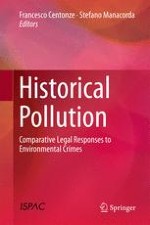2017 | OriginalPaper | Buchkapitel
3. Historical Pollution: In Search of a Legal Definition
verfasst von : Giuseppe Rotolo
Erschienen in: Historical Pollution
Aktivieren Sie unsere intelligente Suche, um passende Fachinhalte oder Patente zu finden.
Wählen Sie Textabschnitte aus um mit Künstlicher Intelligenz passenden Patente zu finden. powered by
Markieren Sie Textabschnitte, um KI-gestützt weitere passende Inhalte zu finden. powered by
